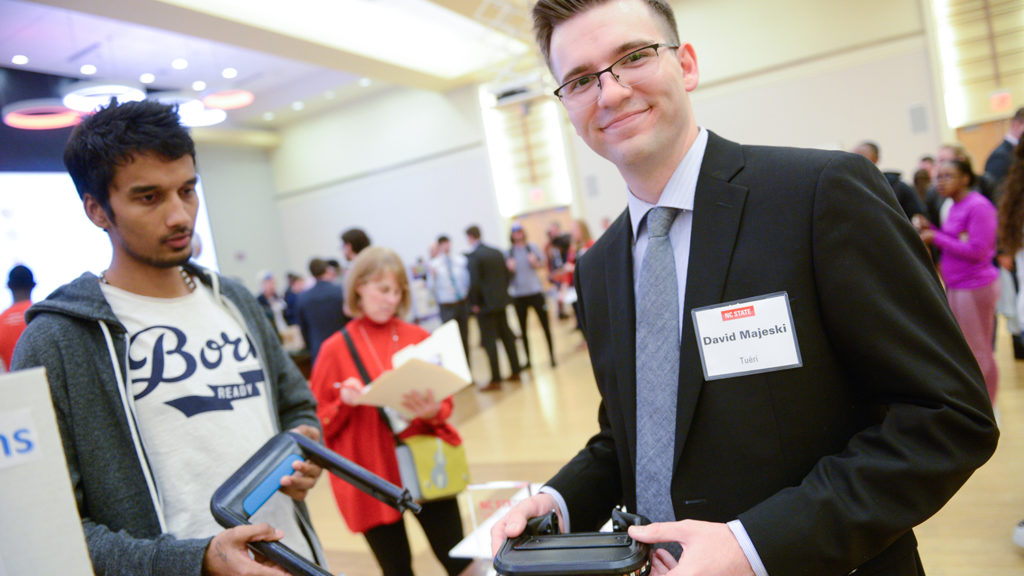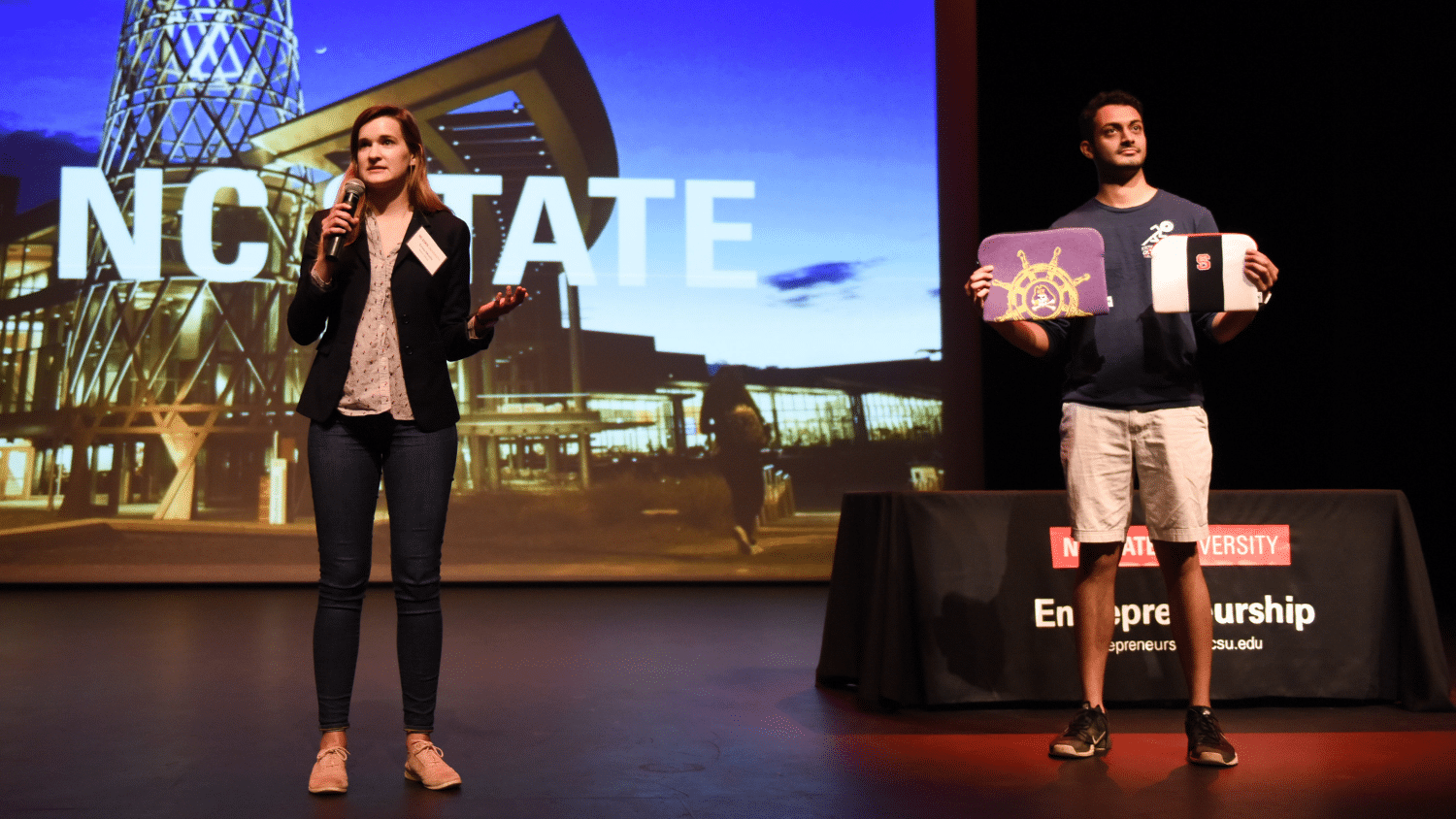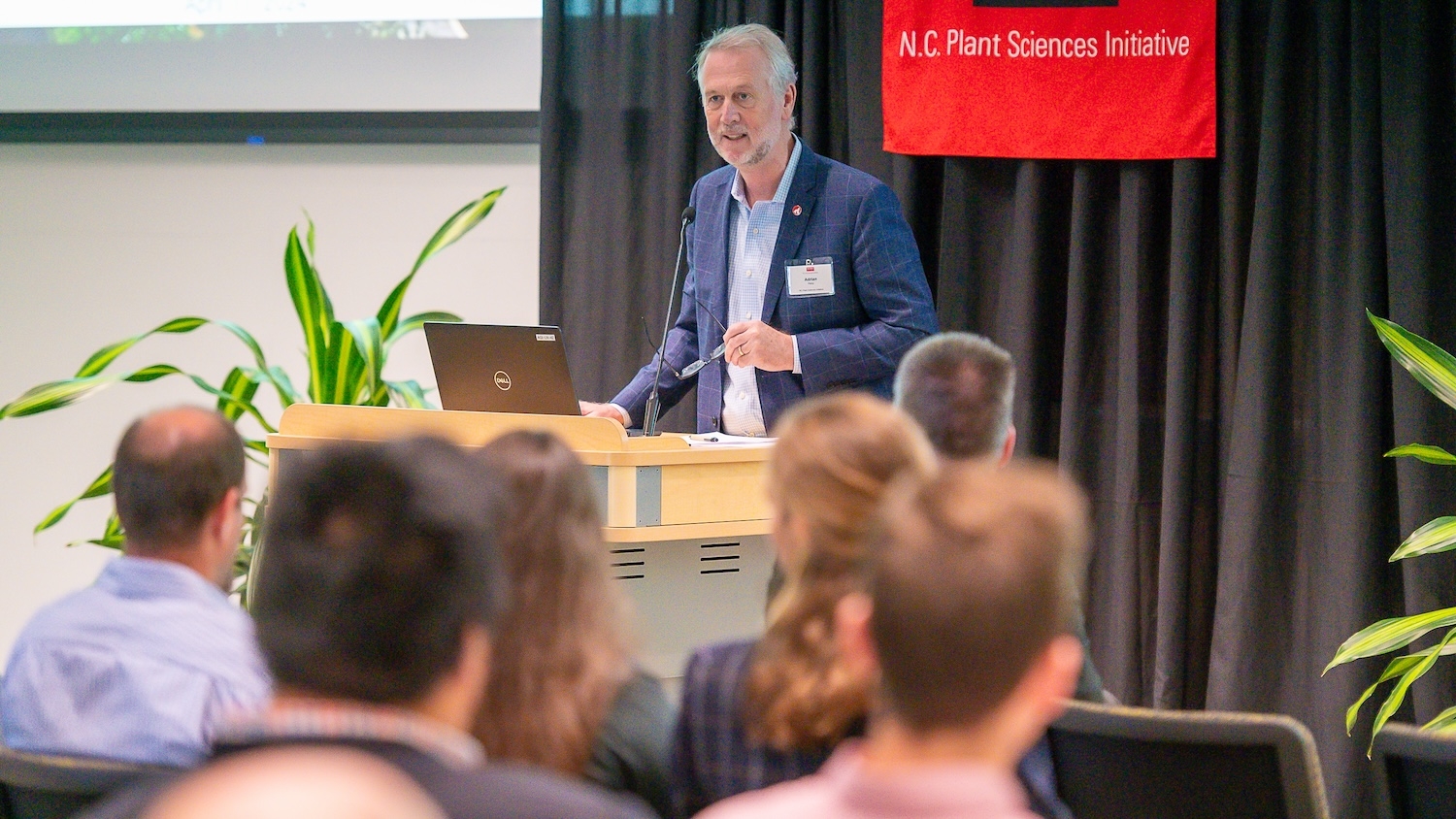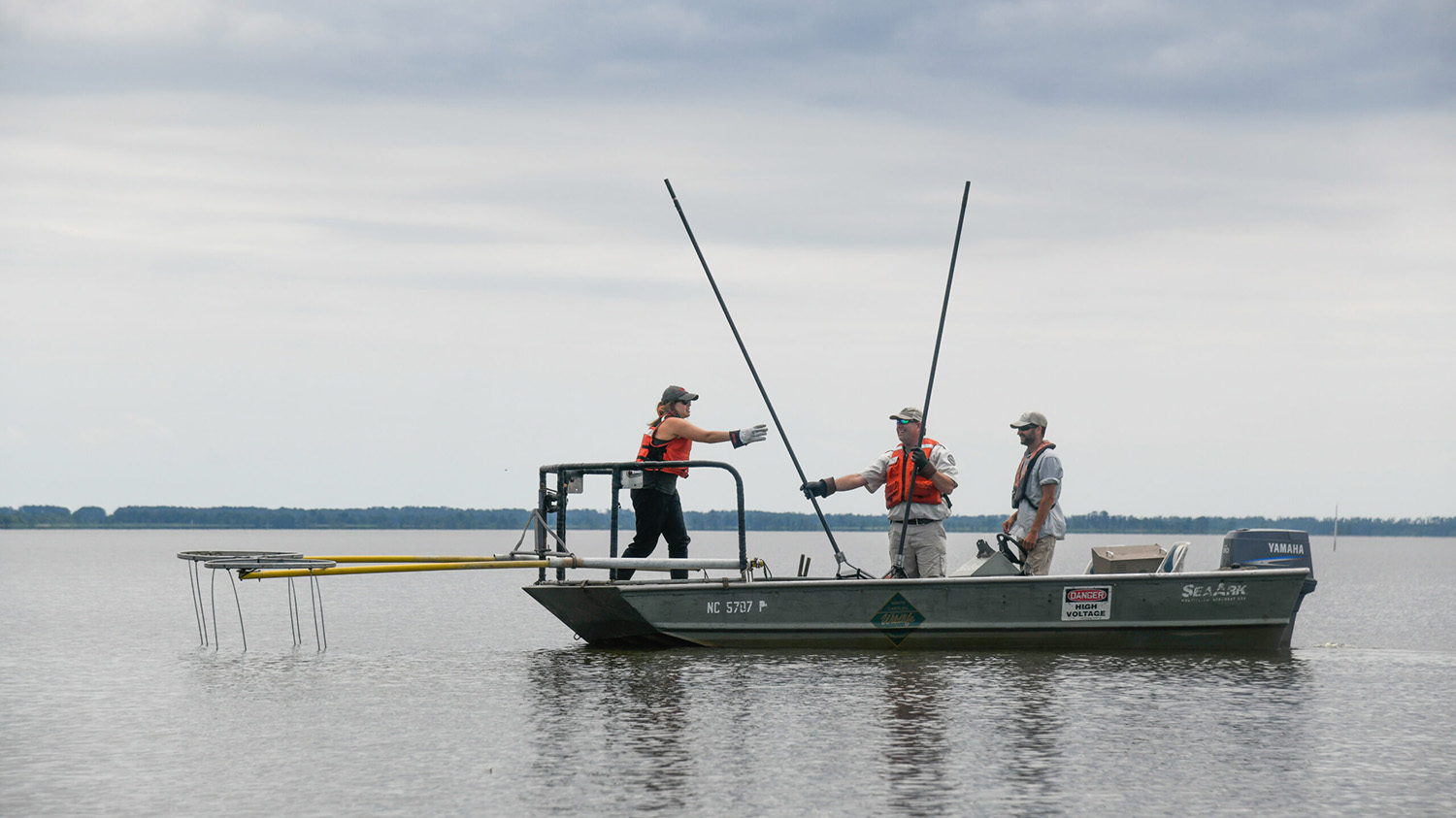NC State sees a wealth of student startup ideas every year. While ideating may come easy to some students, moving from the ideation phase to launching a startup can be time-consuming, challenging, and expensive!
Located on Centennial Campus, NC State Entrepreneurship serves as the central entrepreneurship hub for all students on campus, where students have a safe sandbox to test ideas, tinker with prototypes and get the help and resources they need no matter where they are on their entrepreneurial journey. Not to mention, they get plugged into a community of like-minded students eager to build businesses. And yes, NC State Entrepreneurship offers many resources to help budding entrepreneurs get the funding they need to make their dream a reality!
About eGames
Our biggest, most competitive, and most lucrative competition of the year is the eGames (short for entrepreneurship games). Originating in 2009, the eGames is NC State’s largest entrepreneurship competition awarding over $100,000 in seed funding and additional in-kind gifts to NC State entrepreneurs. Besides the financial benefits available to winning competitors, participating in entrepreneurship competitions helps students improve their pitching skills, create business plans, receive valuable feedback, and gain greater exposure for their innovations or ventures.
How the Competition Works
The student segment of eGames is split into two categories, the “Think” category, where teams can compete with an idea or business in the early stages, or the “Do” category where they compete with an established startup. The Daugherty Endowment Track is open for officially registered startup companies who have licensed NC State intellectual property in the past three years.
Out of nearly 60 competing student teams this year, a wonderful panel of preliminary judges selected 10 student teams to move forward to the final round – five from each category. As an added bonus, every competing team could also unlock additional $2,000 Impact award prizes in 4 different categories.
Available Cash Prizes
“Think” Awards – $20,000 Total
- 1st Prize – $9,000
- 2nd Prize – $7,000
- 3rd Prize – $4,000
“Do” Awards – $25,000 Available
- 1st Prize – $10,000
- 2nd Prize – $8,500
- 3rd Prize – $6,500
Daugherty Awards – $50,000 Available
- 1st Prize – $25,000
- 2nd Prize – $15,000
- 3rd Prize – $10,000
“Impact” Awards – $16,000 Available
- Arts Impact Award – sponsored by the NC State Department of Music’s Arts Entrepreneurship Program
- 1st award – $2,000
- 2nd award – $2,000
- IBM Built on Cloud – sponsored by IBM
- 1st award – $2,000
- 2nd award – $2,000
- Design and Prototype – sponsored by NC State Entrepreneurship
- 1st award – $2,000
- 2nd award – $2,000
- Social and Environmental Impact
- 1st award – $2,000
- 2nd award – $2,000
Audience and Judge’s Choice Award – Additional $2,000
- $1,000 Audience Choice – Join us at Talley Student Union on April 18 for the eGames Award Ceremony and help your favorite team win the $1,000 audience choice.
- $1,000 Judge’s Choice – Our panel of industry judges will be awarding an additional $1,000 to their favorite team during the eGames Award Ceremony on April 18.
2022 eGames Finalists
Below is a list of Think and Do finalists that will be pitching live on April 18 at Stewart Theater in Talley Student Union at 5:30 p.m. The live pitch competition and award ceremony are open to the public and your vote can help the team with the most votes win an additional $1,000 audience choice award. Grab a ticket to secure your spot!
Think Category Finalists
Cervu
- Team Members: Abigail Scheer (Graduate School) and Alan Rosenbaum (College of Engineering)
- Problem: By 2025, advances in cancer treatment will enable 15.1 million American and European female cancer survivors to live for decades beyond initial cancer diagnosis. Because cancer treatments can cause dyspareunia due to changes in vaginal anatomy, tissue dryness or atrophy, and reduced elasticity, 40% of these women will develop chronic pelvic pain and 50% will develop significant dyspareunia (pain with intercourse). The vast majority (87%) of these women view sexual function as important to their quality of life, but many will struggle with dyspareunia management. Although effective treatments exist, many do not benefit due to lack of awareness, referrals by oncology providers, and access to pelvic floor physical therapy (PFPT) from specialized physical therapists (PT) who manage this condition. Other barriers for women seeking to obtain dyspareunia treatment include long commutes and wait times, the burden of numerous medical appointments, financial cost, embarrassment, and privacy.
- Solution: Our proposed product seeks to improve access to care and the effectiveness of PFPT to result in better outcomes. It relies upon an integrated system that includes the patient, their PT, an intravaginal treatment device, and a mobile application. This comprehensive system benefits both patients and clinicians. Patients will benefit from the intravaginal device that will enhance treatment by facilitating custom therapies. Mobile application-based education and communication will augment the patient experience while allowing for the PT to create individualized exercise plans and provide remote supervision of at-home therapy progress. This remote monitoring benefits the clinician by allowing them to receive complete patient at-home therapy metrics and use them to adjust treatment to optimize patient outcomes. Our company leverages design, research, product development, and clinical expertise which uniquely positions us to improve the PFPT experience and result in better health outcomes.
Spir Medical
- Team member: Travis McKay (Graduate School) and Jack Twiddy (College of Engineering)
- Problem: The bag valve mask (BVM) is a manual resuscitation device used by 25 million first responders in the US alone. BVMs force air into the lungs of patients who are unable to breathe unassisted. To utilize a BVM, two users must obtain a leak-proof seal around the patient’s face, open their airway, and deliver the appropriate volume of air to the patient’s lungs at the correct respiratory rate. These tasks are made more challenging as BVMs are often operated, out of necessity, by a single responder for 30-60 mins. and patients require additional treatment outside of ventilation. Common injuries include pneumothorax (excessive tidal volume or pressure), hypo/hyperventilation (improper respiratory rate), and gastric distension (improper mask position). Research shows that 93% (n=121) of participants exceeded the upper threshold for tidal volumes using the adult BVM. Current assistance devices such as manometers or expiratory gas sensors only partly address pneumothorax and gastric distension.
- Solution: The Dynamic Internal Volume Actuator (DIVA) utilizes sensors to provide real-time feedback for pressure, tidal volume delivered, and expiratory gas composition, and a motor to provide automated ventilation. Inclusion of tidal volume feedback allows responders to fully address pneumothorax as well as better prevent hypo/hyperventilation. The DIVA can be operated using manual and automated ventilation using the built-in motor. This reduces the number of responders needed to ventilate a patient while allowing the sole operator the ability to fully focus on ensuring leak-proof mask seal and opening the patient’s airway while ensuring optimal respiratory effort. The DIVA is composed of 5 core systems. The traditional 3 from a BVM (self-inflating bag, one-way valve, mask), a sensor array, and a unique internal mechanism enabling automation. The DIVA utilizes these features to “improve the medical responder’s ability to perform other critical tasks…”, making jobs easier and saving lives.
Straight Shot
- Team members: David Horne, (College of Engineering, Poole College of Management,) Ryan Coman, Jacob Walker, Spencer Wallis, Trenton Wallis (College of Engineering, Engineering Entrepreneur Program members)
- Problem: The golf swing is one of the most complex sports movements. Hundreds of micro movements need to be made in an average of 1.2 seconds to complete a golf swing. In a survey of over 1200 golfers, Mintel reported that the top three issues with the golf industry are that it is too expensive, takes too much time, and is too hard to learn. For example, it takes an average golfer 3.5 years just to be satisfied with their golf game. Currently, the only way for golfers to quickly improve is paying upwards of $100/hr for professional lessons. Those who cannot afford lessons or don’t want to pay that much are left guessing how to improve their golf swing. This is why 73% of the 3 million people who try golf for the first time each year will quit and hang up their clubs for good. The golf industry does not currently have an affordable way for new golfers to improve without paying an arm and a leg.
- Solution: The most common problem for golfers and the motivator behind needing lessons is that they are too inconsistent. These golfers need information to understand what is causing their inconsistencies and how to fix them. Straight Shot provides an affordable path towards high quality golf practice by providing information that golfers need to get better. Our ultra-light, non-obtrusive attachable sensor captures, analyzes, and displays the golfer’s swing to help them understand their problems faster. With Straight Shot, golfers can have more productive practices that lead to a more enjoyable golfing experience.
Rampart Crop Defense
- Team members: Samuel Brown (Graduate School,) Ramya Vijapurapu (CALS,) Taylor Vickers and Austin Ladner (College of Engineering)
- Problem: Pseudoperonospora cubensis, the causal agent of Cucurbit Downy Mildew (CDM), afflicts 2.6 million acres of crops globally and is recognized as the single greatest disease threat to cucumber production worldwide. This disease kills cucurbit leaves, resulting in stunted growth, sun damage, and reduced crop yield. 20-50% crop yield loss is typical with 100% loss possible with no fungicide treatment. Cucumber growers do their best to stay ahead of this disease by spraying fungicides more than 11 times per season, introducing high levels of chemicals into the environment and contributing to the rapid spread of fungicide resistance. For a 50 acre cucumber farm, fungicide costs alone run upwards of $75,000 per season. Fuel costs, soil compaction from tractors, and most importantly the loss of the farmer’s time are other negative externalities associated with current standards of CDM management.
- Solution: Our product, Rampart, is an early disease alert system that helps growers detect CDM 12 days before it impacts crops, during which time fungicides are much more effective. Additionally, Rampart classifies P. cubensis spores into two categories, or clades, each with specific host targets and fungicide susceptibility. Rampart combines aerial spore traps with qPCR genetic tests to enable tailored fungicide regimens for CDM management. Rampart enables cost-effective and environmentally friendly fungicide management via reduction of 3-5 applications per season. Reduced fungicide application is made possible with Rampart’s early detection spore classification abilities by enabling more effective treatments and delaying the start to traditional fungicide regimens. Rampart takes the guesswork out of disease management, giving farmers strategic insight in CDM management.
Rede2m
- Team members: Viraj Shah (Graduate School,) Malek Ibrahim (College of Engineering,) Emily Brown (College of Sciences)
- Problem: The economy dependence on fossil fuels accelerates the rate of global warming and worsening the climate crisis. The carbon dioxide emissions per capita in the US is at 15.2 t/y (data.worldbank.org) which is twice of that in Germany or Japan. Our first goal in the US is to cut this number by half by year 2030 (whitehouse.gov) but we do not have the technology to achieve this goal at reasonable price today. Our second goal is to develop these technologies in the US. Hydrogen is a clean gas fuel that can be produced from solar or wind energy by water electrolysis and utilized to run automobiles or generate electricity using Hydrogen Fuel Cells with zero carbon emissions. The problem is that hydrogen is expensive to store and ship because of its very low density and very high flammability. Moreover, the rate of hydrogen production by solar or wind fluctuates with the wind speed and weather humidity, and thus cannot be relied on to provide energy for the residential or industrial grid.
- Solution: We developed photocatalytic flow reactor and catalyst that allow for hydrogen storage and transportation in the liquid form. The ability of our technology to react hydrogen with a liquid substance and claim it back when needed utilizing solar energy allows for the on-demand storage and transportation of wind or solar energy at a small fraction (30%) of the energy and cost required to do the same task by other thermal technologies.
Do Category Finalists
Wolfpack Medical
- Team members: James White (Graduate School,) Alan Rosenbaum, Robin Brocato and Kelsey Ling (College of Engineering,) Danielle Zenner (Poole College of Management)
- Problem: Exsanguination from major vessels in the limbs, which can occur during severe extremity trauma, can occur in seconds. In high-stress situations, often in combat or field settings, every moment matters to the injured soldier or civilian. A traditional tourniquet can often be applied to the limb to staunch the flow of blood. However, with some mechanisms of injury – most commonly blast injuries – there is no remaining limb to which a traditional tourniquet may be applied. In these instances, a JTQ is the preferred method. An analysis of injuries suffered by soldiers in Iraq and Afghanistan found 1 in 10 – or 171 soldiers’ lives – potentially survivable prehospital deaths were due to this type of injury. These tourniquets function by applying pressure to a blood vessel proximal to the site of injury, within the pelvis or chest. However, a large amount of force must be applied to a small target, and current devices are difficult to apply and are apt to slip during patient transport.
- Solution: Our solution is the WolfPack Medical Sawyer Junctional Tourniquet, whose novel design improves upon standard JTQs by more effectively occluding the bleeding vessel, reducing device slippage, and is easier to apply. This is critically important in high-stress situations, and results in faster resolution of the hemorrhage and a greater likelihood that the patient can be stabilized for transportation to medical facilities. Our device achieves these outcomes by having a unique design that can allow placement to initially be performed manually and stabilized with a thumb, instantly stopping the bleeding while the device is strapped in place. The unique surface also prevents changes in device positioning during transportation, as the resumption of bleeding in a medical helicopter could be devastating. After licensing the rights to the patent for this technology, which is currently held by the U.S. Navy, we may deliver this technology to clients in the U.S. military and civilian communities.
YardGuard
- Team members: Meekhel Patel, Dhawal Bhatt, Isaac Hancock and Alex Lerner (College of Engineering and EEP members)
- Problem: Our product seeks to resolve the age-old problem of weeding and yard maintenance. The issue in a more discrete context is the growth of unwanted plant material in specific regions of one’s property and thereby the hindrance by seeking to remove them. In this context, anything may be perceived as a weed as long as it is unwanted. The location of each weed also need not be restricted. This is a relevant issue as Americans spend around 2.3 Billion minutes per year doing lawn and yard maintenance so any reduction in this time spent is extremely valued. Current alternatives are paying individuals to weed or taking on the situation on one’s own. As long as the earth is spinning, there will be plant growth in areas that people despise.
- Solution: Our solution is YardGuard, a fully autonomous weed remover. YardGuard uses image recognition to actively search for weeds among your lawn and garden and pursue any targets the device has recognized. The device then can remove the weeds through mechanical and chemical methods. A claw is attached to the base of the device, which is used to remove the weed from its roots. Additionally, a weed killer is sprayed on the target area, which will prevent future weeds from growing in the area. Completely powered through solar energy, the device will automatically activate once it has sufficiently recharged. A mobile app can be used to check the status and location of the device.
ByteSize Learning
- Team member: Ayden Hochstein (College of Sciences)
- Problem: Like most high schoolers across the US, I did not receive much exposure to computer topics before entering college. It wasn’t until my last year of High School that I received any formal education in technology, and I even had to leave my hometown to do it. In North Carolina alone, less than 1/3rd of all K-12 schools have any computer science curriculum. With such limited educational resources available for the majority of graduating high schoolers, it’s no surprise to see that millions of tech jobs go unfilled as the industries boom. However, if we can generate interest in software at a young age, we can develop more tech-minded thinkers who are passionate about their jobs, hobbies, and livelihoods. This problem has been managed by providing supplemental education for students through many platforms such as youtube, udemy, and khan academy. These services offer a chance for a student to get exposure to these topics in addition to their current schooling.
- Solution: ByteSize Learning offers fun and engaging courses to students from elementary all the way to high school in software topics including photo and video editing, digital music production, video game design, programming and even engineering. We take an individualized approach to learning software and each “ByteSize Learner” has the freedom to create their own unique projects in our classes with the troubleshooting aid of a live instructor. ByteSize Learners leave our classes both passionate and knowledgeable in using professional software programs to make custom projects for schoolwork, hobbies, and even careers. For a young child who has limited exposure to professional software programs, self-paced asynchronous content can leave them frustrated and confused when they get stuck. Instead, through our self designed course material. Our students show genuine passion and confidence in continuing their technical education.
Dyelation
- Team member: Arissa Wheeler (Graduate School)
- Problem: Dyelation needs funding to continue developing interactive apparel from sustainably sourced materials to offer what is missing in the lifestyle apparel brand industry. The fashion industry is widely known for producing an estimated 10% of all greenhouse gas emissions. The growing throwaway fashion trend mirrors the consumer’s lack of connection with their clothing. Many apparel brands do not connect with their consumer’s values, leaving them searching for new throwaway apparel. Current lifestyle brands that aim to address this problem gain consumers through a shared passion for sustainability. However, these brands are still part of the problem since they do not currently use only renewable or recycled materials in their products.
- Solution: Dyelation addresses these significant problems in the fashion industry through 100% sustainably sourced materials and a lifestyle brand that connects consumers through shared values and shared experiences with its interactive apparel consumers want to wear again and again. For music and art industry consumer. Who are not satisfied with the current fast fashion apparel industry values and lack of consumer personality reflected in the clothing designs. Dyelation will focus on its consumer values and foster connections between shared experiences. Unlike the competitors that encompass too broad audiences and do not allow for a deeper connection to their brand. Dyelation provides sustainably sourced, high-quality apparel that embodies its user’s core values and further fosters consumers’ desire to connect with others through its proprietary interactive ink that sparks conversations and play, resulting in a deeper connection with the apparel.
Phloat
- Team members: Geoffrey Fylak (College of Engineering)
- Problem: Communicating with classmates in college is much more difficult than it needs to be. Through online classes and large lecture halls, students are missing out on hundreds of relationships and opportunities. Phloat allows students to join group chats for all of their classes without having any previous connections in the course and all you need is your university email address. Phloat users can also create sub group chats, DM classmates, and keep track of everyone they have ever had a class with. These features combine to create an all encompassing intra-university platform where students can connect and help each other in their classes. This problem exists at every college and is affecting over 20 million students. Currently, students are resourcefully using platforms such as GroupMe and Snapchat to create group chats for their classes, but there is one key deficit to these apps: students must be invited. With Phloat however, it is totally inclusive and accessible to everyone.
- Solution: Phloat is a course based mobile messaging app. Students sign up with their university email and are grouped together by email domain to ensure each university has their own respective application. Once logged in, students have the ability to search for their Courses. If their Course has already been created, they are able to join. If it has not been created, they can create it and it becomes public for others to search for and join. Phloat is different because you don’t need prior connections to meet and message your classmates. Oftentimes, course group chats are formed among a small number of students who knew each other before the class. Additionally, each Course provides a course-wide group chat as well as the ability to form sub-groups and direct message classmates. Users can customize their profile, which their classmates can view to learn about their background and connect on LinkedIn. Classmates are linked to each account so students stay connected after the semester.
Daugherty Challenge Finalists
- Helixomer, Inc.
- Vizma Life Sciences
- DNAli Data Technologies Inc
- Mammae Biosciences
- Grade-It, Inc
Meet the Teams at the Startup Exhibition

Join us for a startup exhibition reception after the awards ceremony at the Ballroom in Talley. This will be an opportunity to meet the student teams, network and celebrate entrepreneurship at NC State. Food and drinks will be provided with RSVP.



